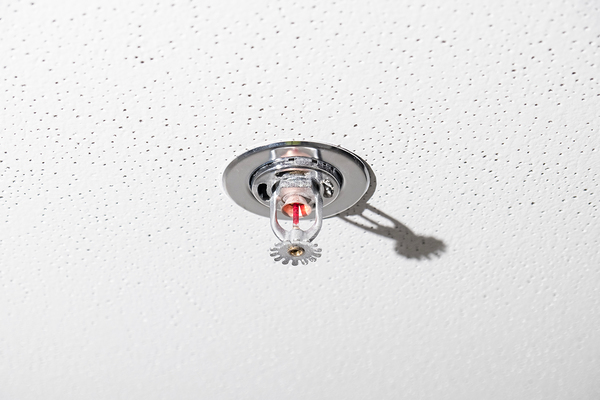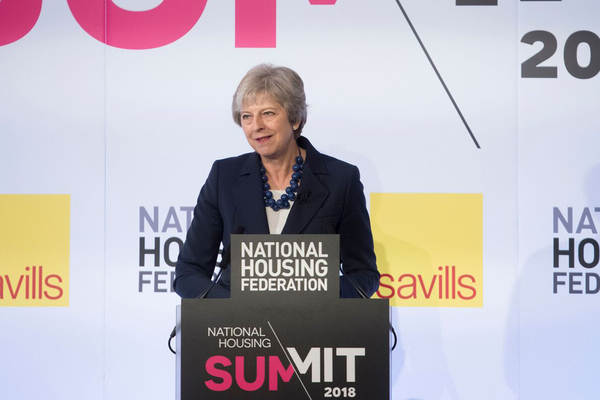You are viewing 1 of your 1 free articles
Sprinklers fitted in only 4% of London tower blocks
Just 4% of council-owned tower blocks in London have sprinklers installed in their flats, an investigation by the Labour Party has found.
The party has renewed its calls for the government to spend £1bn retrofitting sprinklers in all social housing high rises.
It used Freedom of Information laws to gather data from 29 London boroughs about more than 800 blocks of 10-storeys or taller.
It found that only 32 have sprinklers installed.
Though the prevalence of sprinklers in tower blocks is small, it indicates a fourfold increase from when Inside Housing carried out a similar investigation in 2015.
Since the Grenfell Tower fire in June last year, a number of social landlords have committed to installing sprinklers in their high-rise stock.
Several councils have requested cash from Westminster to pay for the work without success.
Then-housing minister Alok Sharma told at least one council last year that sprinklers were an “additional rather than essential” fire safety measure.
Some of the country’s largest fire services, as well as the National Fire Chiefs Council, have previously told Inside Housing they believe sprinklers to be essential in high-rise buildings.
Sarah Jones, shadow housing minister, who carried out the research, said: “Councils and social housing tenants have been betrayed by this government who promised to do whatever it took after Grenfell to make tower blocks safe, and has since backtracked.
“It’s simply contradictory for ministers to say that sprinklers aren’t essential in older buildings while requiring them for new buildings. It creates a two-tier system which disproportionately impacts social housing tenants. Why should certain people be entitled to safer housing than others?
“Sprinklers are just one part of the fire safety mix, but they are proven to work. That’s why Labour is calling for a government Fire Safety Fund to help councils with sprinklers and other important fire safety work.”
Since 2007, sprinklers have been legally required in new residential buildings of 10 storeys or higher, but the regulations do not apply retrospectively.
Housing minister Kit Malthouse said: “Since the tragic events at Grenfell Tower, we have taken steps to ensure the immediate safety of all high-rise buildings.
“We are going to fully fund the removal and replacement of unsafe cladding, like the type used on Grenfell Tower, on high-rise buildings owned by councils and housing associations, estimated at £400m.
“Sprinklers can be effective but they are one of many fire safety measures that can be adopted. If local authorities have concerns about the costs of essential fire safety measures, they should contact us to discuss their position and any flexibilities we can offer.”
Inside Housing’s fire safety campaign Never Again calls on the government to fund the retrofitting of sprinklers in high-rise towers.
Never Again campaign
In the days following the Grenfell Tower fire on 14 June 2017, Inside Housing launched the Never Again campaign to call for immediate action to implement the learning from the Lakanal House fire, and a commitment to act – without delay – on learning from the Grenfell Tower tragedy as it becomes available.
One year on, we have extended the campaign asks in the light of information that has emerged since.
Here are our updated asks:
GOVERNMENT
- Act on the recommendations from Dame Judith Hackitt’s review of building regulations to tower blocks of 18m and higher. Commit to producing a timetable for implementation by autumn 2018, setting out how recommendations that don’t require legislative change can be taken forward without delay
- Follow through on commitments to fully ban combustible materials on high-rise buildings
- Unequivocally ban desktop studies
- Review recommendations and advice given to ministers after the Lakanal House fire and implement necessary changes
- Publish details of all tower blocks with dangerous cladding, insulation and/or external panels and commit to a timeline for remedial works. Provide necessary guidance to landlords to ensure that removal work can begin on all affected private and social residential blocks by the end of 2018. Complete quarterly follow-up checks to ensure that remedial work is completed to the required standard. Checks should not cease until all work is completed.
- Stand by the prime minister’s commitment to fully fund the removal of dangerous cladding
- Fund the retrofitting of sprinkler systems in all tower blocks across the UK (except where there are specific structural reasons not to do so)
- Explore options for requiring remedial works on affected private sector residential tower blocks
LOCAL GOVERNMENT
- Take immediate action to identify privately owned residential tower blocks so that cladding and external panels can be checked
LANDLORDS
- Publish details of the combinations of insulations and cladding materials for all high rise blocks
- Commit to ensuring that removal work begins on all blocks with dangerous materials by the end of 2018 upon receipt of guidance from government
- Publish current fire risk assessments for all high rise blocks (the Information Commissioner has required councils to publish and recommended that housing associations should do the same). Work with peers to share learning from assessments and improve and clarify the risk assessment model.
- Commit to renewing assessments annually and after major repair or cladding work is carried out. Ensure assessments consider the external features of blocks. Always use an appropriate, qualified expert to conduct assessments.
- Review and update evacuation policies and ‘stay put’ advice in the light of risk assessments, and communicate clearly to residents
- Adopt Dame Judith Hackitt’s recommended approach for listening to and addressing tenants’ concerns, with immediate effect
CURRENT SIGNATORIES:
- Chartered Institute of Housing
- G15
- National Federation of ALMOs
- National Housing Federation
- Placeshapers












